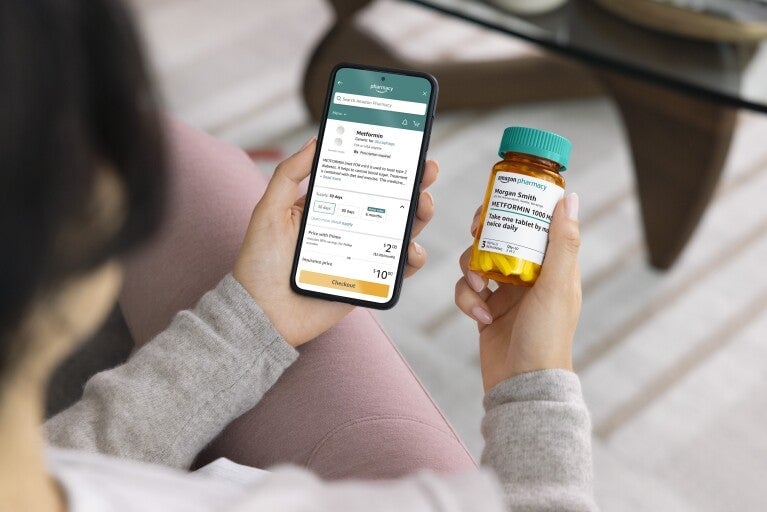Amazon and Walgreens are trying to make healthcare more accessible with technology
Amazon is also leveraging its e-commerce platform to help patients access cheaper medications

Pharmacies have seen little innovation over the years. After a doctor’s visit, a physician faxes a prescription to a pharmacy; the patient has to travel there, wait in line, and often doesn’t know what their out-of-pocket costs will be until it’s time to pay. It’s an inconvenient and inefficient process, so it’s not surprising that an estimated 50% of Americans do not take their medications as prescribed.
Suggested Reading
But in recent years, partly driven by the pandemic, some companies like Amazon (AMZN) and Walgreens (WBA) have been working to update the pharmacy experience, making it more digital and expanding the range of services they can provide, sometimes even filling the gaps that primary care might miss.
Related Content
“There is something that has not been addressed in the last five decades in the pharmacy world, and that is how do you engage patients and get them to stay on their medications, whether for acute needs or chronic needs?” Amazon Pharmacy chief medical officer Dr. Vin Gupta said on a panel at Forbes Healthcare Summit in New York City last week. “And that’s what we’re trying to build here.”
Gupta added that Amazon is working to achieve this by making it easier for people to access prescriptions at lower prices. Recently, the e-commerce giant announced plans to expand same-day prescription drug delivery to 20 U.S. cities by 2025 — a logistics feat that entails embedding pharmacies within the company’s fulfillment centers.
“So, that means about 45% of the country, if they need a Z-pac, will get their Z-pac within just a few hours,” Gupta said.
The company is also leveraging its e-commerce platform to help patients access cheaper medications. For instance, it automatically applies manufacturer coupons — many of which often go unclaimed — directly on its website, eliminating the need for patients to seek them out. This initiative will help Amazon Pharmacy customers save about $50 million, according to the company.
Small changes in making pricing more transparent, such as using AI to help customers estimate their copays, are also making a difference for patients. While these tools don’t alter the actual cost or coverage, they provide clarity and reassurance, helping patients feel confident that their insurance will cover their medication and that their copay will cost what they expect it to.
“So, every time we make an improvement to make it simpler, easier to access or more affordable, we see bumps up in the adherence rates,” Amazon VP of Pharmacy John Love said in interview with Quartz.
Additionally, more pharmacies are beginning to offer actual care for situations where making a doctor’s appointment isn’t always convenient. Walgreens, for example, which has faced challenges in refining its clinic model, in the last few years has started to offer vaccines, medical screenings, and even virtual check-ins for non-emergencies to its customers. Pharmacists are now even allowed to write prescriptions for treating certain conditions like COVID-19.
“If you think you have Covid, you go and get tested. And if you test positive for Covid, we can actually prescribe it right then and get you on a medication when you’re in the store,” Walgreens senior vice president and chief pharmacy officer Rick Gates said at the summit. “Same thing with the flu. It can be lots of other things, but that’s just the precipice.”
Amazon Pharmacy recently announced that it is working with the company’s telehealth service, One Medical Pay-per-visit, to help patients access treatment plans and free medication delivery for conditions they might feel uncomfortable discussing with their primary care doctor, such as erectile dysfunction or hair loss.
“I think it all comes down to, at the end of the day, better outcomes,” Gates said. “I think pharmacy is really set up to really drive that, but we’ve got to continue to change.”